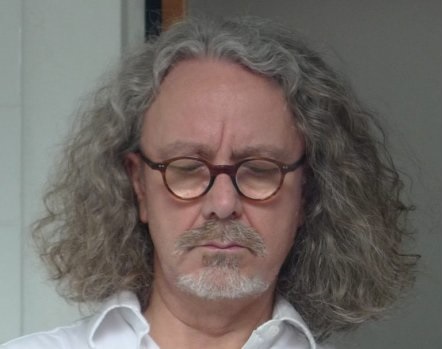 United Kingdom James Dillon, The Book of Elements (1996-2003): Noriko Kawai (piano), Purcell Room, Southbank Centre, London, 19.1.2020. (CC)
United Kingdom James Dillon, The Book of Elements (1996-2003): Noriko Kawai (piano), Purcell Room, Southbank Centre, London, 19.1.2020. (CC)

James Dillon’s virtuoso The Book of Elements is a modern masterwork. My colleague Jean Martin reviewed the first complete performance of the piece at London’s The Warehouse, just down the road from the Purcell Room, in May 2003 here; the pianist on that occasion was Ian Pace (who commissioned the third book; Noriko Kawai commissioned the second). Kawai gave a complete performance at the 28th Huddersfield Contemporary Music Festival in 2005 (review) and has of course famously recorded The Book of Elements for NMC (NMC D091). She has also recorded a disc of solo and chamber works by Dillon for NMC (NMC D131) which includes the Piano Quintet, where she is partnered with the Arditti Quartet.
As to the current piece, the work’s gestation spanned 1996 to 2003; a complete performance takes around one hour 25 minutes, given without interval. Such is the concentration required from both pianist and audience, it is impossible to imagine breaking the sequence. Part of that impression surely came from the strength of Noriko Kawai’s Purcell Room performance, and the reciprocal concentration of the audience itself. It was wonderful to see such a full auditorium (as I have said before in these pages, the thirst for challenging new music is absolutely there – look at how Stockhausen fills halls); and wonderful also to experience such enraptured silence from the audience. Mainstream concert attendees could learn a lot about how to behave.
A second piano stool implied a page turner would be used, but no; that, and a music stand, were used for sheet music not in use at the given time. This is an extended work requiring huge stamina. It requires a pianist completely attuned to Dillon’s modernist soundworld: small surprise that the pianists associated with this piece apart from Kawai and Pace are Roger Woodward, Rolf Hind and Nicolas Hodges.
The work is impeccably structured: it is cast in five broadly equidurational parts, one for each of the Chinese elements (air, water, earth, fire and ‘the void’). The number of movements to each part decreases as the work progresses; eleven in the first, then seven, then five, three and finally just one, as if the music coalesces over time from relatively brief statements into a broad, somewhat summatory statement of an individual soundworld.
A sort of asynchronous minimalism informs the first sounds we hear. As the music goes on, the ear finds various anchors that recur: tremolos (sometimes invoking the gamelan); bells; that minimalism recurring in darker, post-modal guise in the third book; veiled reminiscences of times and composers past (there is even a near-major tried at one point): Messiaen, Debussy (specifically at one point ‘Cathédrale engloutie,’ but also more generally texturally) and Bartók. The composers referenced are more shadows that walk in the periphery of one’s view, occasionally surfacing into near-daylight. After all, an attempt to include all five elements one at a time is, on one level, an attempt to dissect the world; yet the trajectory of that dissection moves towards a more complete whole in the fifth and final volume. This inherent multi-level structural dissonance powers the piece.
This is music that draws one in; the nearly hour-and-a-half span felt much less. The virtuoso movements are hugely difficult: one thinks of the bass-driven velocity of the last section of the second volume, or the flickering moments of the fourth section, like fire. Kawai managed perfectly the silences between gestures, which are particularly a feature of the first and fourth parts,. Similarly, she perfectly projected the idea of notes as cascading droplets of sound in the water section. There is a familiarity she has with the score that establishes a bond of trust between pianist and audience; there was even the impression that certain passages are, simply, fun to play. Neither was there one moment where she pounded the piano. The music was certainly loud sometimes, but Kawai never broke her tone on her well-prepared Steinway.
The fifth section, in one continuous movement, begins with overt pointillism, two disjunct lines projected by alternating extreme registers. In this final, quarter-hour, stretch, now-familiar techniques recur (tremolos, bells, conglomerations of trills) while a more overt dance element seems to wish to make itself known.
This was a triumphant, superb performance of important, challenging, yet life-affirming music. Noriko Kawai is a magician of the piano. Good to see the composer in attendance, too.
Colin Clarke
